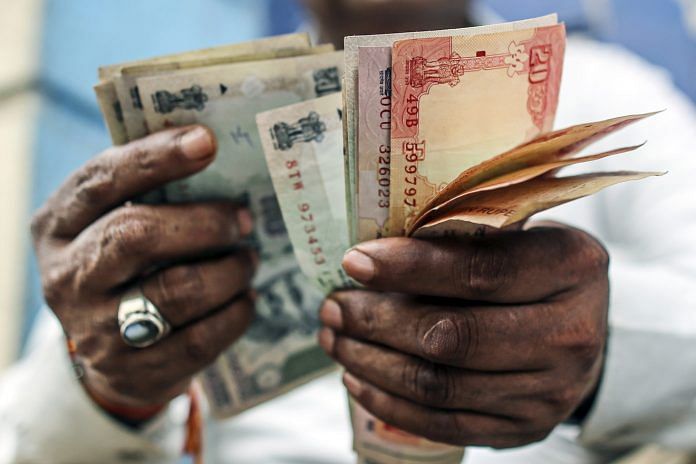To achieve the objective of becoming a $5 trillion economy by 2024-25, India needs to sustain a real GDP growth rate of 8 per cent per annum. International experience, especially from high-growth East Asian economies, suggests that such growth is possible but can only be sustained by a virtuous cycle of savings, investment and exports catalysed and supported by a favourable demographic phase. To this end, Budget 2019 has laid out contours of how we can make it possible.
Since Independence, India has become a $1 trillion economy in 57 years, $2 trillion in seven years, and will become $3 trillion in five years (by 2020). We believe, with a favourable external environment and a stable exchange rate, India could achieve $4 trillion in next three years and $5 trillion in next two years, by 2024. Currently, India is the sixth largest economy and could break into top five by 2022 at this rate. We are where China was in 2006 and an 8 per cent-plus growth could propel us to a $5 trillion economy by 2024-25. For this, we need a pro-growth policy of enhancing productivity, strong and inclusive income and boosting demand.
To achieve a $5 trillion economy by 2025, it is estimated that India requires investments averaging Rs 20 lakh crore every year and this investment-driven growth requires access to low cost capital. Indian bond market, which is presently in a nascent stage, needs some policy reforms. The Narendra Modi government has announced several measures in the Budget to deepen the bond market — that involves among other things, improved retail participation in markets.
Also read: Budget: Govt may favour gradualism over sudden change, pragmatic tinkering over clear plan
The Budget provides specific thrust to infrastructure, financial sector, MSMEs, rural economy, housing, farmer and youth welfare, water security and labour.
The infrastructure sector, particularly aviation, waterways, roadways, has received significant attention in the Budget. Additionally, the government will also make available a blueprint this year for developing gas grids, water grids, i-ways and regional airports.
The Modi government has also taken several initiatives in the Budget to augment the non-banking financial companies (NBFC) sector. This includes additional liquidity facility and moving the regulation of housing finance companies to the Reserve Bank of India (RBI) from the National Housing Bank (NHB). The banks have been provided with recapitalisation of Rs 70,000 crore, higher than market expectations.
For ease of access to credit for MSMEs, the government has reiterated its interim Budget announcement of providing loans upto Rs 1 crore for MSMEs within 59 minutes through a dedicated online portal. Further, all GST-registered MSMEs will now get interest subvention on incremental loans. This should certainly spur the growth of credit under this segment and hasten formalisation. The government will create a payment platform for MSMEs to enable filing of bills and payment thereof on the platform itself.
The government has targeted three crore retail traders and small shopkeepers, whose annual turnover is less than Rs 1.5 crore, under a new scheme called Pradhan Mantri Karam Yogi Maandhan Scheme.
Also read: Modi wants to bring household savings into financial markets but Budget roadmap isn’t clear
For affordable housing, the Budget has proposed a further tax deduction of Rs 1.5 lakh for interest paid on housing loans sanctioned in the current fiscal year up to 31 March 2020. The government has also proposed to develop public infrastructure and affordable housing on land owned by central ministries and central public sector enterprises through joint development and concession.
In a major boost to thousands of startups in India, the Modi government has announced a host of incentives to “release the entrepreneurial spirit” in this Budget. These include a TV programme exclusively for startups, easing foreign direct investment rules into startup segments like grocery, e-commerce and food delivery, proposing a host of enhancements to the digital payment ecosystem that would help fin-tech startups and incentives for electric vehicles.
Also read: Why India’s middle classes are Modi’s ‘Muslims’
Overall, the Budget has pegged a reasonable tax revenue number at 11.1 per cent (five year CAGR at 13.2 per cent). However, the Budget has pegged non-tax revenue at 27.7 per cent (five year CAGR at 5.5 per cent, though FY19 expanded at 27.3 per cent), riding on a Rs 44,000-crore jump on dividend transfers. The expenditure numbers are reasonable and are, in fact, lower than historical trends. Nevertheless, the commitment to fiscal deficit target is most reassuring and the markets will be glad with a reasonable fiscal deficit number.
The author is Group Chief Economic Adviser, SBI. Views are personal







Now it is clear that India can achieve $5trillion economy by2025. With this positive attitude, we should support the government initiatives.
I don’t agree. $5 trillion economy is a distant dream. Whatever may be the position in respect of nominal GDP growth rate, it is only the inflation adjusted growth rate that is recognised. Economic Survey says 7% growth rate for the current year, whereas in the budget it is assumed at 8 %. India’s GDP as on 31 March, 2019 stood at $2.74 trillion. Even with 8% growth rate, the GDP would become $2.96 trillion as on 31st March, 2020. CAGR calculator will tell us that the required growth rate to achieve the target of $5trillion by 31st March, 2024 is 14% and not 8%. Let us not get swayed by the stated target of $5 trillion. Compare per capita GDP and we shall come to know the real picture.